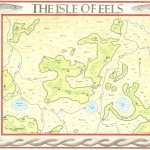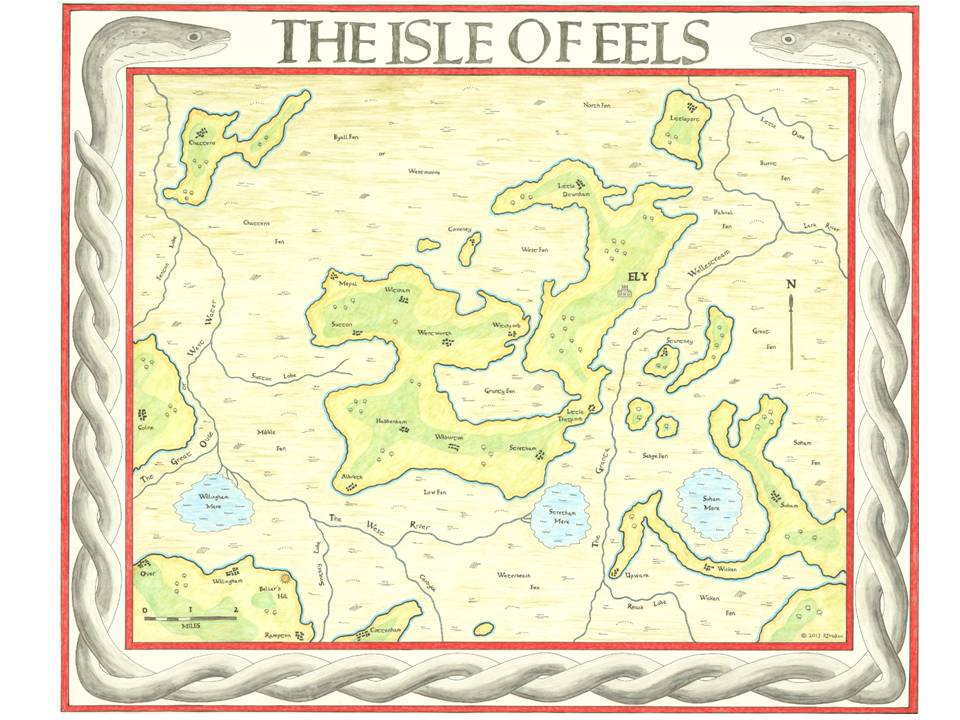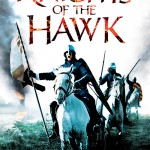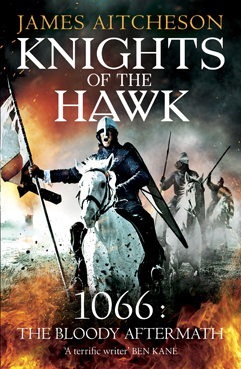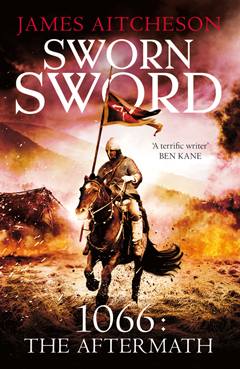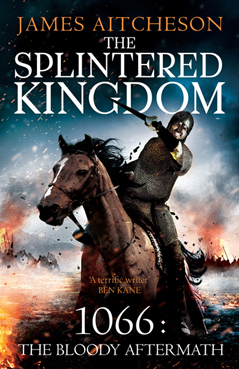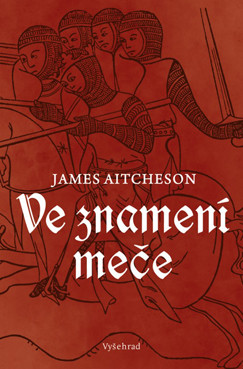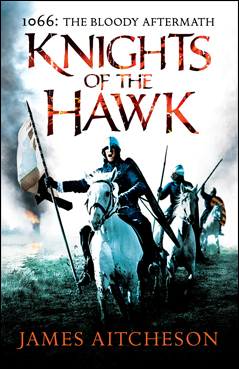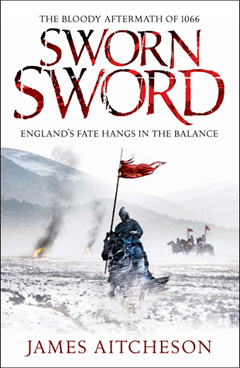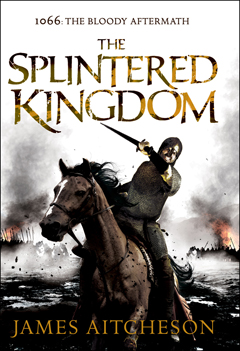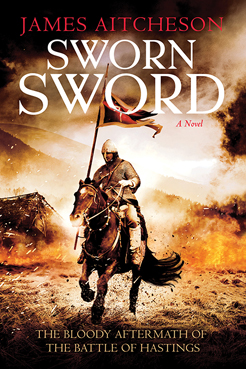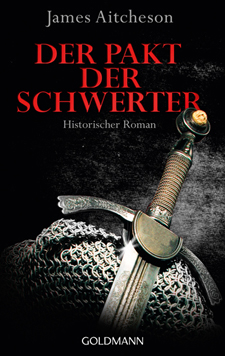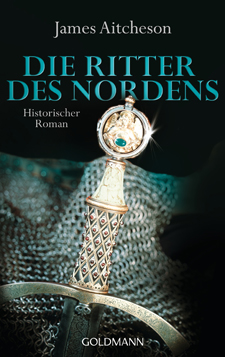“The sword-path is never a straight road, but rather ever-changing, encompassing many twists and turns. All a man can do is follow it and see where it leads.”
In a little less than a month’s time, Knights of the Hawk, the third instalment in my Conquest Series featuring the knight Tancred, will be released in the United States in hardcover.
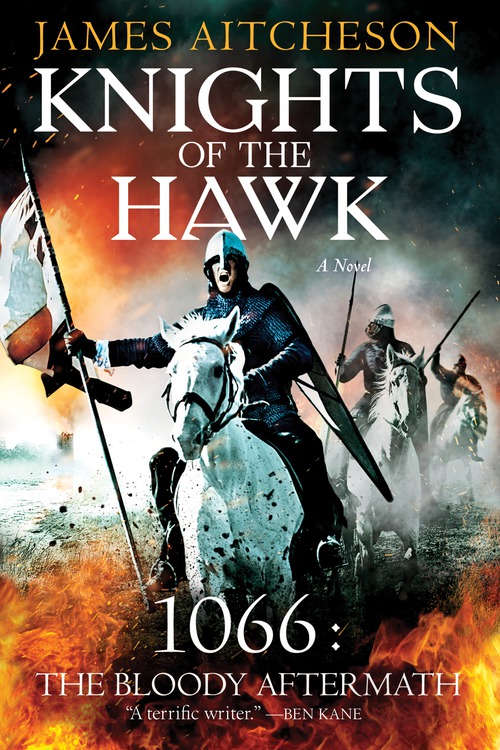
Knights of the Hawk • James Aitcheson
Sourcebooks Landmark • 416 pp. • Hardcover • $24.99
Like the previous two volumes in the series, the book will be published by the excellent team at Sourcebooks Landmark, with whom I’ve had the immense pleasure of working over the last three years, and will be available from all good bookstores and online retailers from August 4th.
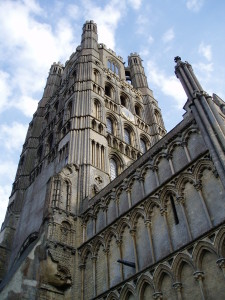
The cathedral at Ely, built on the site of the Anglo-Saxon monastery which Hereward and his fellow rebels established as their base in the fight against the Normans.
The novel begins during the siege of the Isle of Ely, where the infamous English outlaw Hereward the Wake has gathered a band of rebels to make one final, last-ditch stand against the Normans.
As King William’s attempts to assault the rebels’ island stronghold end in disaster, however, the campaign begins to stall. With morale in camp failing, the king turns to Tancred to deliver the victory that will crush the rebels once and for all and bring England firmly within his grasp. But events are conspiring against Tancred, and soon he stands to lose everything he has fought so hard to gain.
“It is in those final hours, when the prospect of battle has become real and the time for hard spearwork is suddenly close at hand, that a man feels most alone, and when doubt and dread begin to creep into his thoughts. No matter how many foes he has laid low, or how long he has trodden the sword-path, he begins to question whether he is good enough, or whether, in fact, his time has come.”
Also, keep a look out for the U.S. paperback edition of The Splintered Kingdom, which will be published by Sourcebooks Landmark in November. I’ll be posting more information about that in the coming months.
This week I’m pleased to be interviewing author and artist Rus Madon, the creator of the Isle of Eels map (below). The map reconstructs the historical geography of the Fens around Ely as they would have appeared at the time of the Norman Conquest: specifically in 1071, when Hereward the Wake and other rebels used the Isle as a base from which to conduct their guerilla war against the invaders.
Rus recently sent me a copy of his meticulously researched map, a remarkable piece of work and a wonderful resource for anyone fascinated, as I am, by the Fens and the role that they played in the years that followed 1066.
His work was also featured recently on the British Library’s blog. You can find him on Twitter at @RusMadon.
*
What was the initial inspiration for researching and creating the map, and how long did it take you to complete?
I am writing a Young Adult story about a girl who lives in modern-day Ely. She travels back in time to the year 1071 when Ely was defended against the Normans by Hereward the Wake. The more I wrote about 11th-century Ely, the more I wondered what it actually looked like. I knew that Ely had been an island, and I was having difficulty tracking where my characters were in relation to the original fens. So to help answer the question, I set about drawing a map of medieval Ely.
Including doing all the research, it took 200 hours to complete the map over an 8 month period in 2013. The original map is 1m x 1.2m and I had to make a workspace in the loft for all the materials, as it was too big to work on in the house!
Was this the first time you’d tackled a project like this?
The proper answer is yes. I do not have an artistic bone in my body, and made several attempts before ending up with the version you see. The eels in the border were particularly challenging (or should I say slippery!).
 However, when I was a teenager in the mid 1970s, I spent an entire summer holiday recreating the map of Middle Earth from The Lord of the Rings. By coincidence, that is also 1m x 1.2m, and was drawn on a big piece of butcher’s paper! It hangs on the wall next to my map of Ely.
However, when I was a teenager in the mid 1970s, I spent an entire summer holiday recreating the map of Middle Earth from The Lord of the Rings. By coincidence, that is also 1m x 1.2m, and was drawn on a big piece of butcher’s paper! It hangs on the wall next to my map of Ely.
The Romans were the first to try to drain the Fens. How much evidence of their activities can still be seen in the landscape today?
Well, the Romans were first and foremost engineers, and they managed to tame many environments across Europe. But the might of Rome met her match with the fens! The landscape of the fens was too wild and impenetrable for the Romans to have any real success in their attempts to drain them.
However, the Romans did build several causeways to make travel easier, the most famous of which was the Fen Causeway, or Fen Road. This linked Denver, near Downham Market, to Peterborough, but it essentially was a road at the northern edge of the fens, which at that time would have been a coast road, as the modern coastline is many miles further north than it was in Roman times. Another causeway linked Cambridge with Ely, some of which is now part of the A10 trunk road and can be seen near Denny Abbey.
They also excavated the Cardyke (visible on my map). This canal system linked the Granta (now the Cam) to the West River and allowed movement of goods and people through the river system of the fens.
Since the marshes were drained in the seventeenth century it has obviously changed a great deal. How difficult was it to rediscover the medieval Fens?
It was harder than I expected. At first I simply tried searching online for a copy of how the fens would have looked, and that would have been sufficient for what I needed. But there were no definitive sources I could find. I also became aware that researchers had published material, but the information was not easily accessible.
What became apparent was that my task had two elements to it. The first was to try and understand how the land would have looked. This was relatively straightforward, as whilst the level of the water table has dropped since the fens were drained, the geology that created the “islands” has not changed at all (in other words, there has been no undue erosion of the landmass).
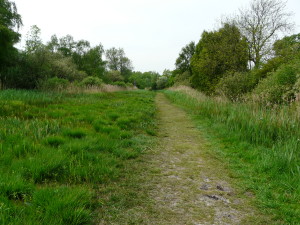 By far the most difficult part of the research was to try and understand how the waterways would have looked, and how they linked together. The river systems that people living in Ely today will recognise is very different to that of a thousand years ago. Today, the Ouse runs west to east and joins the Cam before heading North past Ely. The Cam (Granta) has not changed much since those times, but it came to light that the West River flowed east to west and joined the Great Ouse to head north to the left of Ely! This was a very different system to that seen today. The courses of the Ouse changed principally because of the two huge artificial drainage ditches that were constructed to the northwest of Ely (the Bedford Rivers), commissioned by the 4th Earl of Bedford in 1630 to help in the process of draining the fens.
By far the most difficult part of the research was to try and understand how the waterways would have looked, and how they linked together. The river systems that people living in Ely today will recognise is very different to that of a thousand years ago. Today, the Ouse runs west to east and joins the Cam before heading North past Ely. The Cam (Granta) has not changed much since those times, but it came to light that the West River flowed east to west and joined the Great Ouse to head north to the left of Ely! This was a very different system to that seen today. The courses of the Ouse changed principally because of the two huge artificial drainage ditches that were constructed to the northwest of Ely (the Bedford Rivers), commissioned by the 4th Earl of Bedford in 1630 to help in the process of draining the fens.
What sources did you use to delve into this lost landscape?
I used the resources of the British Library to look for the oldest maps of the area prior to the Dutch draining the fens in the 17th century. All maps of the area are thought to derive from a survey of the area carried out by William Hayward at the beginning of the 17th century. This map was destroyed in a fire, but it is believed that Sir Robert Cotton, a keen collector of fenland maps, had a copy made (The Cotton Map). It is an extraordinary document. Looking at the hand drawn map, you can see the lost Isle of Eels emerging from the fens, as if I was looking back in time.
I supplemented this information with a review of existing Ordnance Survey maps, using the 5-metre contour line to sketch out land that would have been above the ancient water table. In the British Library I came across a pivotal paper published by Major Gordon Fowler in 1934. This paper outlined the possible ancient watercourses of the area. Along with several other authors and notably the excellent Henry Darby, I pieced together how the rivers would have flowed around the island in Saxon times.
The final step was to add the main settlements that would have existed in 1071. For this I used a mixture of references from Domesday Book and the Liber Eliensis, the so-called Book of Ely, written in the 12th century by monks at Ely Abbey.
[NOTE: A full list of references can be found at the end of Rus’s article on the British Library’s blog.]
How much fieldwork did you have to do and what did that involve? How useful was it to be on the ground?
During the summer of 2013 I drove the back roads and lanes that criss-cross the island, making adjustments to my notes, extending the sweep of a hill, noting natural hollows in the ground, and removing the causeways and embankments that had been added much later. Without doubt, being on the ground helped add context to the map.
But for me, on a personal level, it was more than a matter of accuracy. Seeing the landscape allowed me to connect with the map, it helped guide my hand when I was back in my draughty cold loft, transcribing the information; it made the map live for me.
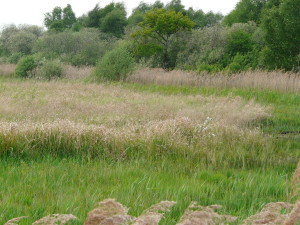 Were there any particularly unusual or surprising nuggets of information that you turned up in the course of your research?
Were there any particularly unusual or surprising nuggets of information that you turned up in the course of your research?
My discovery that the modern day Ouse had a completely different route and was not joined to the Cam surprised me. But to some extent, that was a matter of historical record, I simply needed the time to find the information.
However, some of the old books I read in the British Library gave vivid accounts of the fens in medieval times. The people were a breed apart; tough, independent, wary of outsiders. They wore eel skins to ward off illness and bad spirits. They would fight fiercely to defend their homes. The fens themselves were thriving with life, with bitterns, swans and eels. I read of Flag Iris, a beautiful carpet of flowers with a fragrant scent; but if a man stood on it, he would be sucked deep into the waters below. There was one account of a pod of whales that swam into the Granta from the sea. They became stuck in a small tributary and died. For many decades their skeletons were a reminder of the dangers of the fens.
So what did I do with all these nuggets? I am a writer, so I weaved them into my story, to bring it alive, to make it real.
How do you plan to use the map now that it’s finished?
Now that the map is complete (a copy of which I donated to the British Library), I can travel back in time to 1071 and see the Isle of Eels through the eyes of my characters. It has allowed me to be more credible when describing their adventures.
It is also my intention for the map to be part of the book, so that the readers can also see what Ely would have looked like in the eleventh century. Maybe one day, if my book is a success, the map will become as famous as the one of Middle Earth…
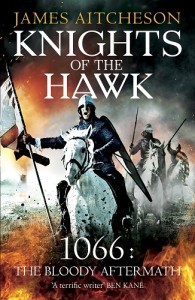
Knights of the Hawk • James Aitcheson
Arrow • Paperback • £6.99
A year on from the end of The Splintered Kingdom, Tancred is more driven and ambitious than ever. In this, the third instalment in his saga, he casts off some of the shackles binding him and strikes out on his own. Opening during the siege of Ely, where the infamous English outlaw Hereward the Wake has gathered a band of rebels to make one final, last-ditch stand against the Normans, Knights sees Tancred journeying overseas for the first time in the series.
Together with a host of unlikely allies, he sets out on a journey that will take him from the marshes of East Anglia into the wild, storm-tossed seas of the north, as he ventures in pursuit of love, of honour, and of vengeance. Just as in the previous two novels, battles and betrayals abound, but this time it’s personal.
Knights of the Hawk is available from all good high street bookshops and online, and also as an ebook for all major formats of readers. To celebrate the paperback release, I have a number of events lined up, with more being added to the calendar all the time, so keep checking back to see if I’ll be making an appearance in your area soon.
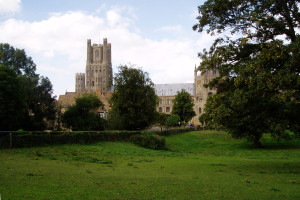
Ely, where Hereward the Wake and his allies made their
stand against the Normans in 1071, and where
Knights of the Hawk begins.
You can also find an entry on Ely and the Fens in my new website feature, Tancred’s England, if you’re interested in finding out more about the setting for Tancred’s latest adventure. As a special web-only bonus, I’ve included a map of how the area would have looked in the Middle Ages before the marshes were drained. There wasn’t space to include it in the book, but I think helps to illustrate the difficult nature of the terrain facing the Normans as they laid siege to Hereward’s island stronghold.
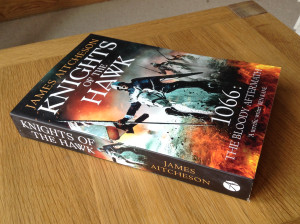
Knights of the Hawk • James Aitcheson
Arrow • Paperback • £6.99
Knights, the third novel in the Conquest Series, which is due to be published in paperback in the UK on Thursday 22nd May, sees Tancred journeying further afield than ever before, setting out across the length and breadth of Britain and making common cause with some unlikely allies as he strives for honour, vengeance and love.
Set in the autumn of 1071, Knights of the Hawk begins during the siege of the Isle of Ely, where the infamous English outlaw Hereward the Wake has gathered a band of rebels to make one final, last-ditch stand against the Normans. As King William’s attempts to assault the rebels’ island stronghold end in disaster, however, the campaign begins to stall. With morale in camp failing, the king turns to Tancred to deliver the victory that will crush the rebels once and for all and bring England firmly within his grasp. But events are conspiring against Tancred, and soon he stands to lose everything he has fought so hard to gain.
Look out for it appearing in a bookshop or a supermarket near you. As always, e-book editions are available on all platforms for the more technologically inclined. If you can’t wait until publication day to get a taste of what’s in store, you can read an extract from the beginning of the book.
And if you’re interested in finding out more about the setting and how the landscape might have looked at the time of the Norman Conquest, there’s an entry on Ely and the Fens in “Tancred’s England”, my historical guide to the kingdom c.1066. Don’t worry, there are no spoilers! As a special web-only bonus, there’s also a map of how the area would have looked in the Middle Ages before the marshes were drained, which unfortunately there wasn’t space to include in the book.
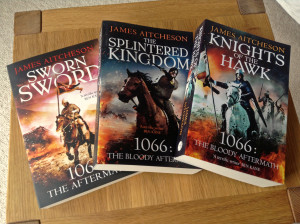
All three books (so far) in the Conquest Series:
UK paperback editions.
Readers in the US unfortunately have a little longer to wait before Knights is available, but in the meantime there’s The Splintered Kingdom to look forward to. Set in the borderlands between England and Wales, it’ll be published this August, and I’ll be revealing more about it in the coming months. Watch this space!
The wait is over! Knights of the Hawk, the third novel in the Conquest series, is published today in the UK by Preface, both in hardback and also – for the more digitally inclined among you – as an e-book.

The cathedral at Ely, built on the site of the Anglo-Saxon monastery which Hereward and his fellow rebels used as their base in their struggles against the Normans in 1071.
Thus begins Tancred’s latest adventure, which sees him facing his greatest challenge yet as he ventures from the marshes of East Anglia to the wild, storm-tossed seas of the north in pursuit of love, of honour, and of vengeance.
Over the course of the next month I’ll be travelling the length and breadth of the country doing talks and book signings and panel events. It all kicks off on Tuesday 29 October when I’ll be launching Knights at the White Horse Bookshop in Marlborough. After that I’ll be travelling up to Doncaster to a signing at Waterstones in the Frenchgate Centre on Saturday 2 November, and then over the course of the next few weeks you’ll be able to find me in Salisbury, Bedford and Cambridge.
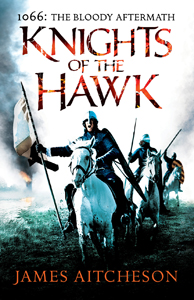
Knights of the Hawk • James Aitcheson • Preface • 448 pp. • Hardback • £16.99
And before you ask, Knights of the Hawk is not the end of the series. Tancred will ride again soon! I’m currently in the middle of researching my next project, which I’m very excited about. I’ll be revealing more details about that over the coming months.
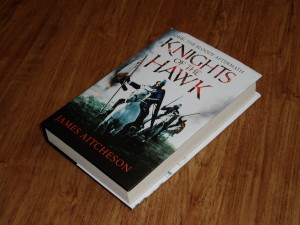
Knights of the Hawk • James Aitcheson • Preface • 448 pp. • Hardback • £16.99
Almost a year has passed since the end of The Splintered Kingdom, so that by the time that Knights begins, it’s already autumn, 1071. The battle for England has been long and brutal. Now only a desperate band of rebels, among them the feared outlaw Hereward the Wake, stands between King William and absolute conquest. Determined to root out those rebels from their island stronghold at Ely in the Fens, the king has gathered an army numbering in the thousands. Among them, as ever, is our hero Tancred, determined to restore his dwindling reputation. And it is to Tancred and his allies that the king, frustrated by the campaign’s various setbacks, turns to in search of a strategy to crush the rebellion.
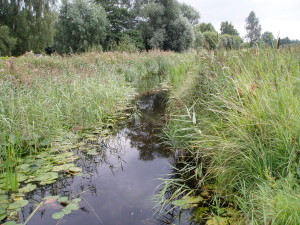
The Fens: the setting for Tancred’s latest adventure. (Wicken Fen National Nature Reserve)
If you can’t make it along to any of the venues listed, don’t worry! I’m adding new dates to the schedule all the time. You can also try putting in a request for an event with your local bookshop or library, who are always eager to have authors in.
By the way, there’s also good news for readers in Germany, where The Splintered Kingdom is due to be published in translation, under the title Die Ritter des Nordens, on 16th December – just in time for Weihnachten! I’ll be posting more details of that release closer to the time.


